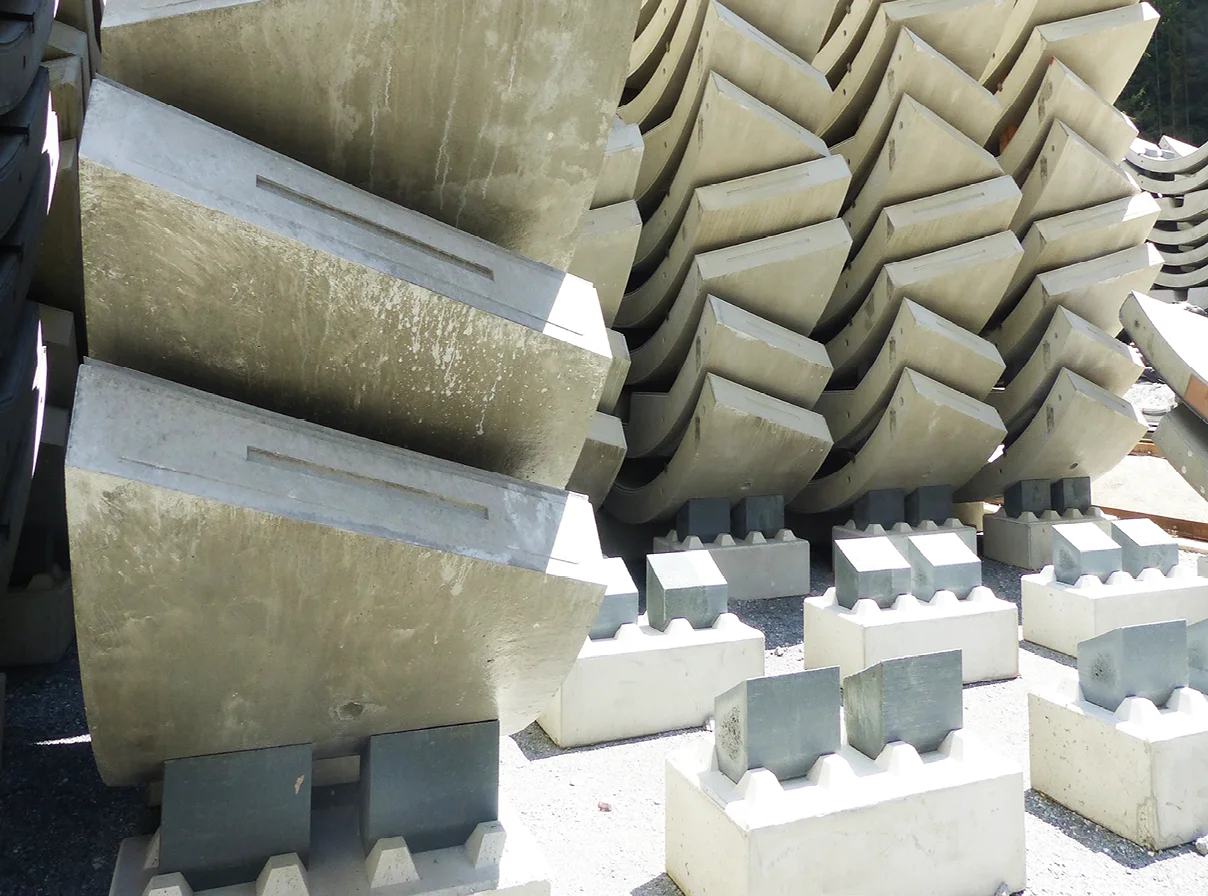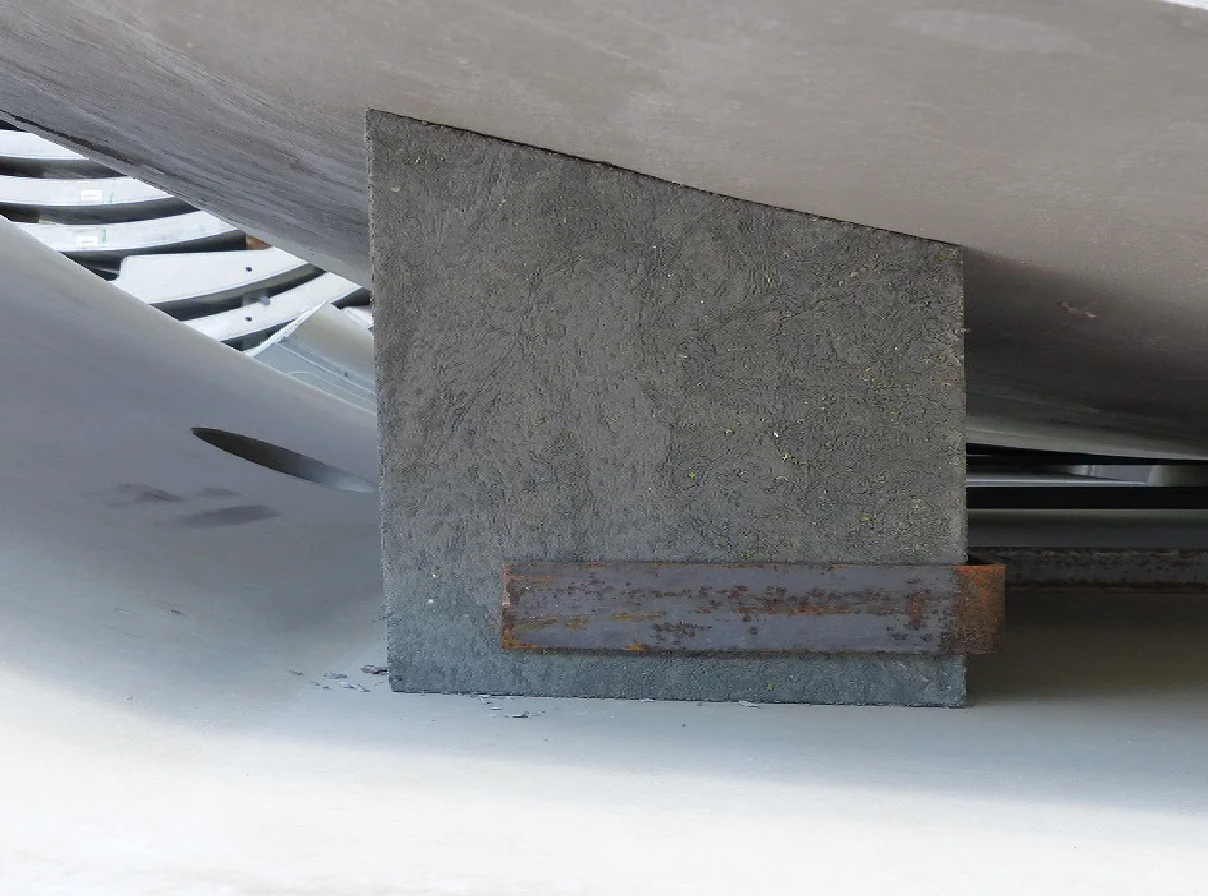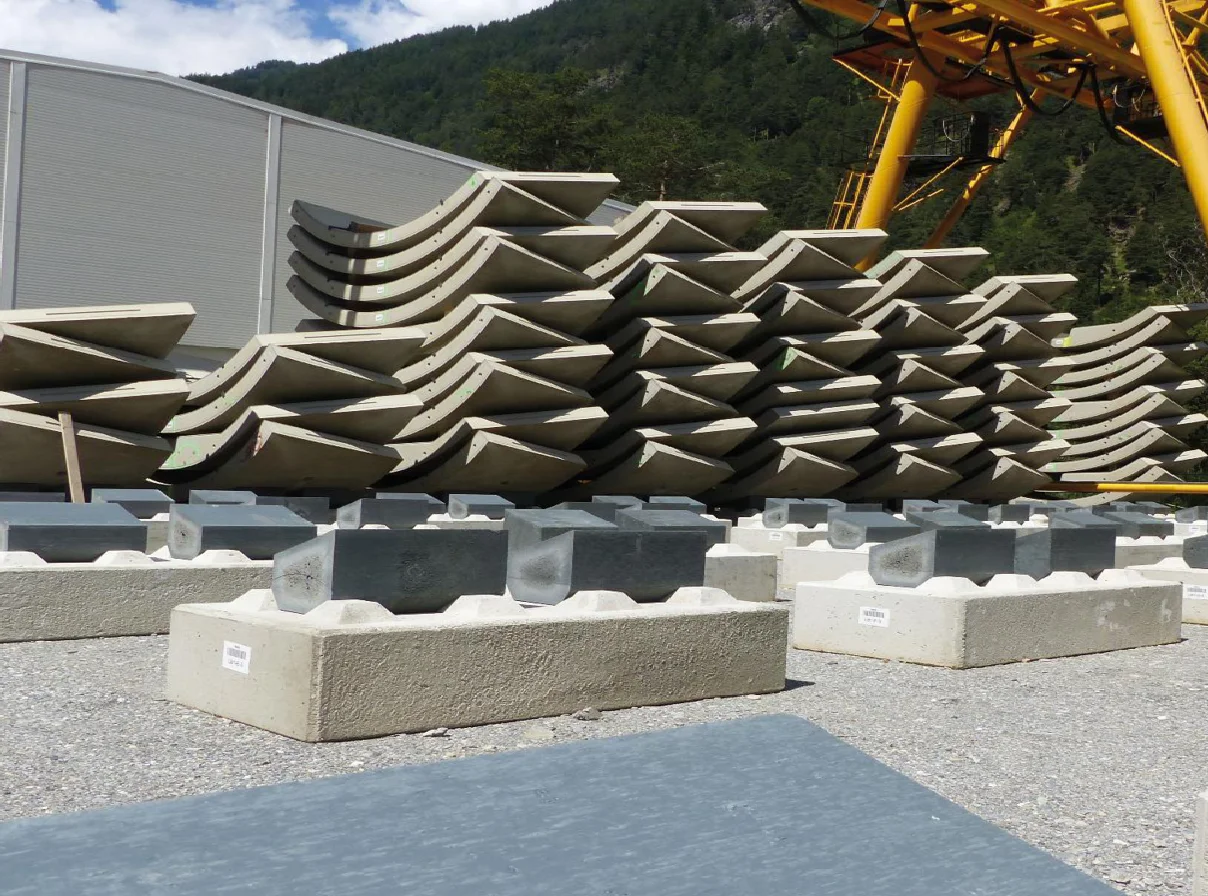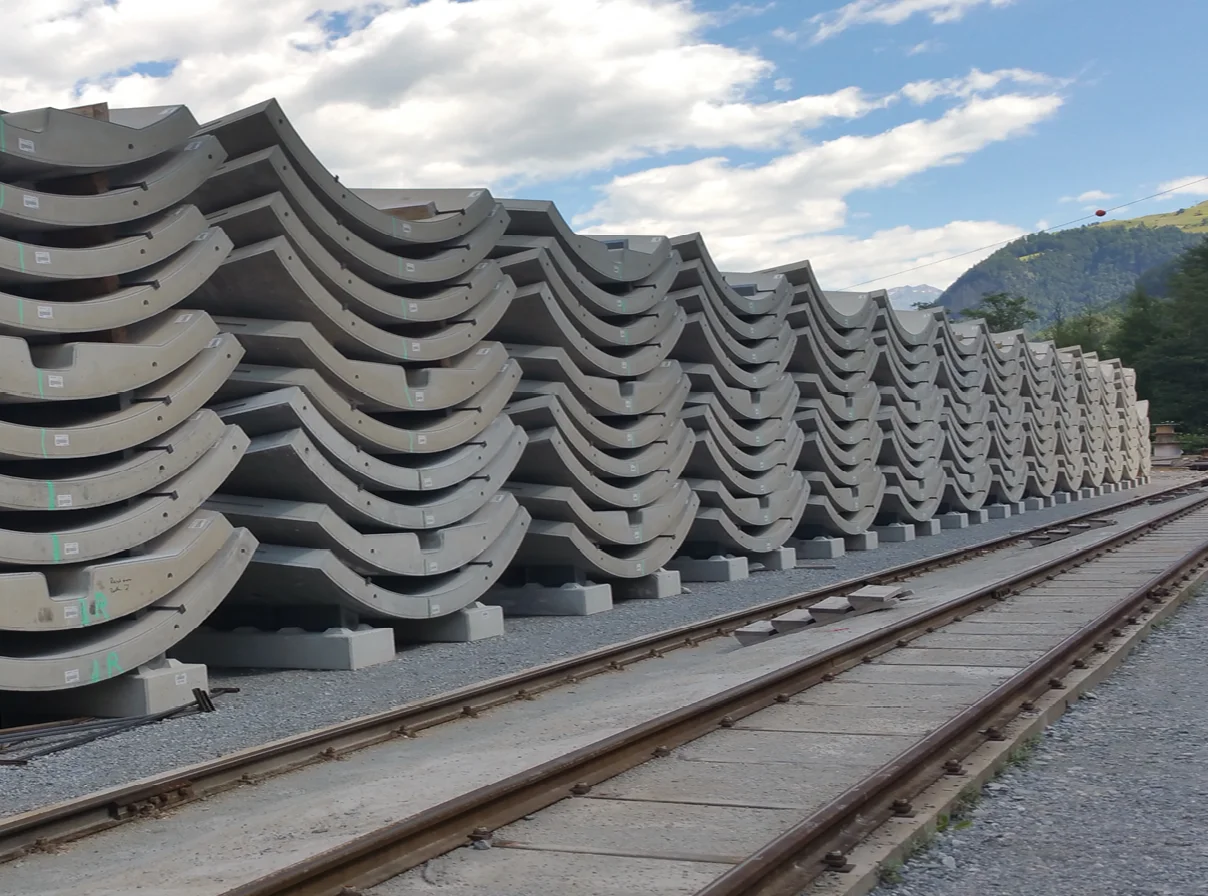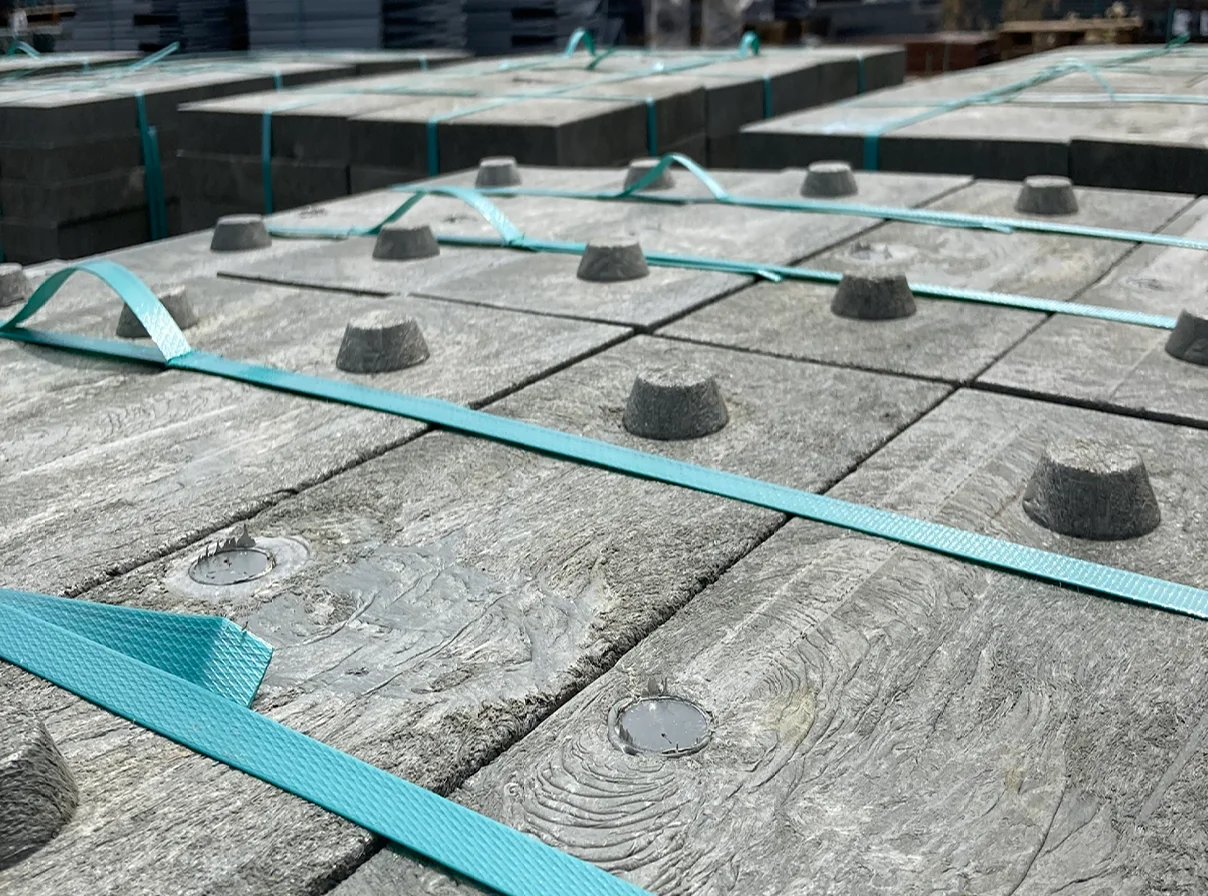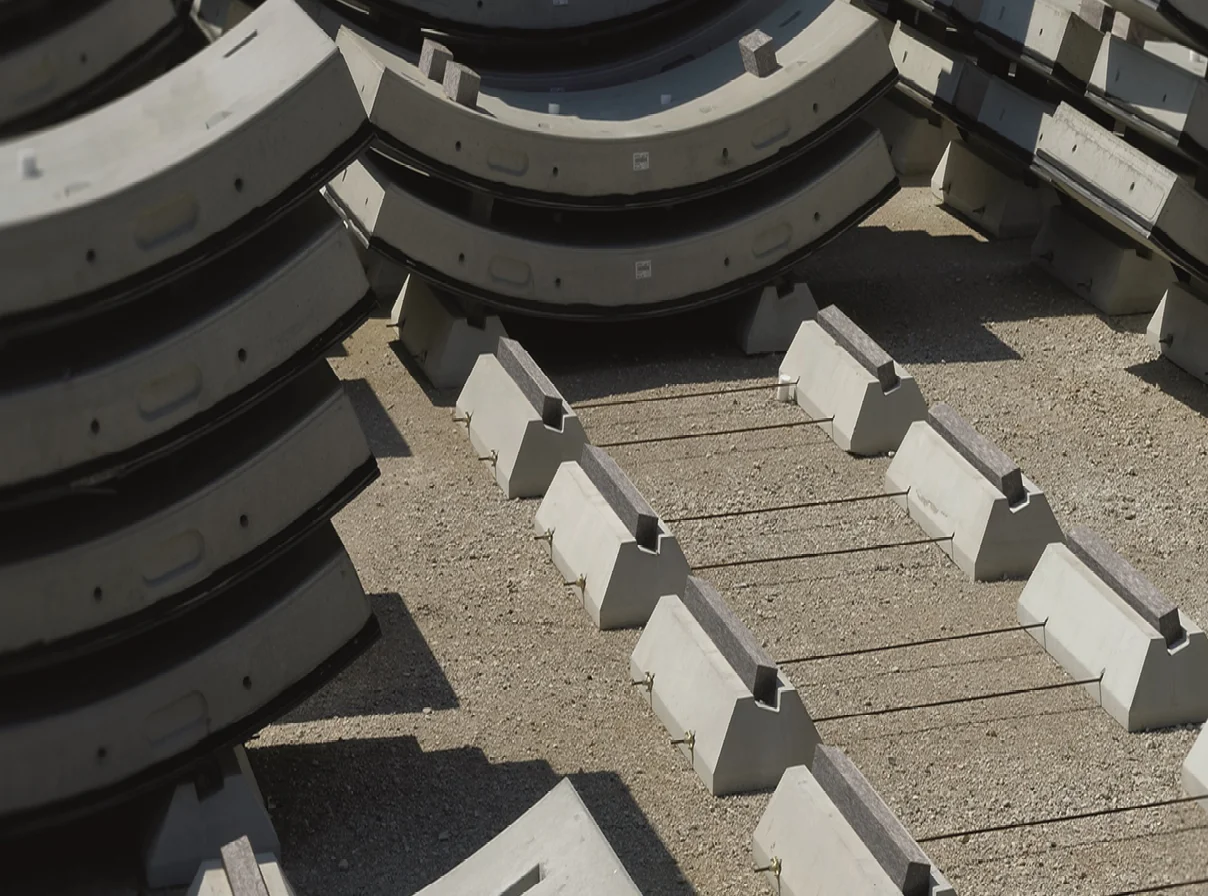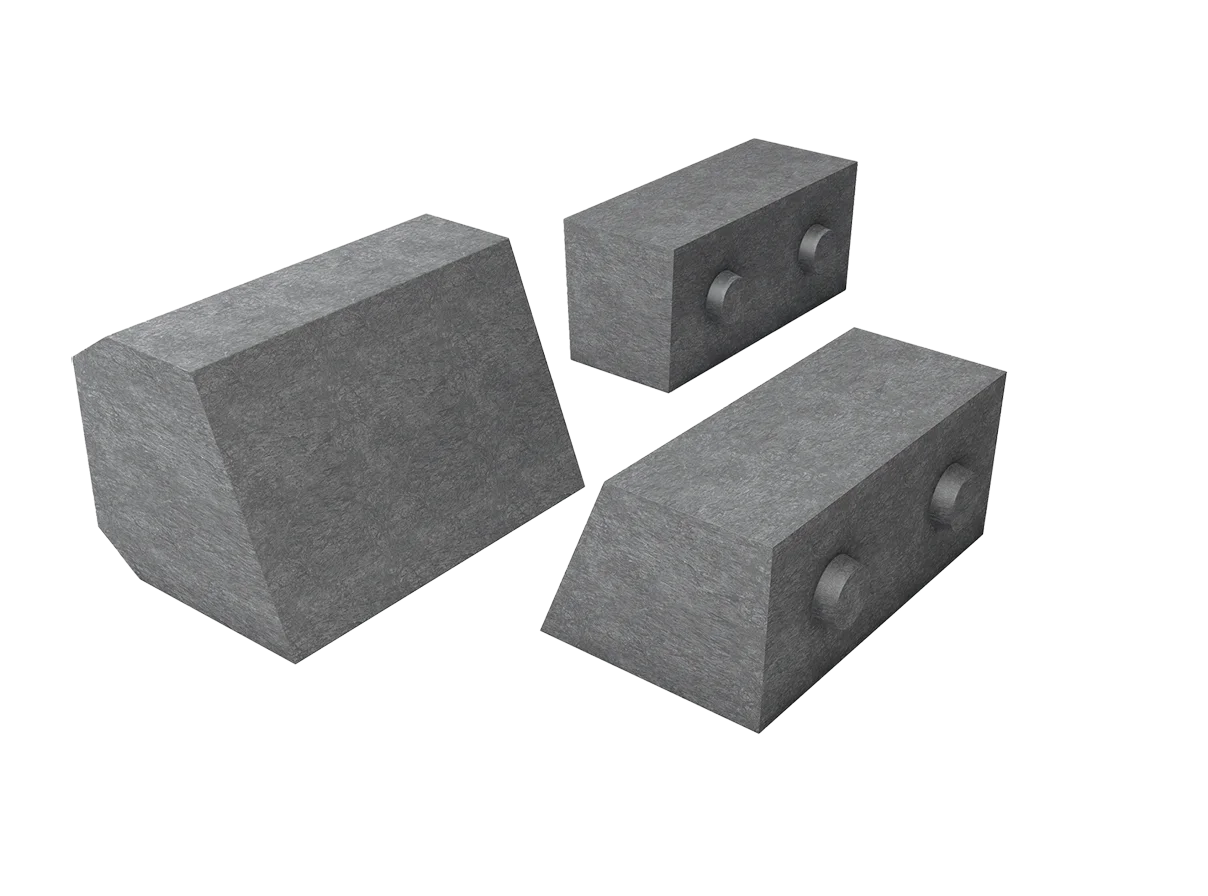
TUNNEL BLOCKS - DUNNAGE
Practical support for tunnel construction
Durable and dimensionally stable
YOUR ADVANTAGES AT A GLANCE
Material characteristics of hanit

High load bearing capacity

Hydrophobic

UV-resistant

Fire class B2 (DIN 4102)

Density of approx. 0.93 g/cm3

Testing of mechanical parameters available
TUNNEL BLOCKS MADE FROM RECYCLED PLASTIC
Individual solutions from hanit
Our hanit System products can be flexibly adapted to customer-specific requirements. Just get in touch – we’ll find the right solution together.
REFERENCE PROJECT
SCS JV | HS2 high-speed railway | United Kingdom
Around 65 miles (105 kilometers) of tunnel will be built between London and the West Midlands for the project, for which 130 million tonnes of earth needs to be excavated. Ten giant tunnel boring machines in five separate tunnel drives will be used to dig the twin-bore HS2 tunnels. Another six cut and cover tunnels will be built and trees and shrubs will then be planted on top to improve the landscape. The project is divided into two phases, the planning phase, with a contract value of approx. GBP 79 million, and the realization phase, with a construction volume of approx. GBP 2 billion.
STRABAG SE, a European-based technology group, won the contract for the main construction of lots S1 and S2 for the implementation of this enormous infrastructure project. STRABAG is active in all areas of the construction industry with extensive expertise in planning and building high-speed railways. STRABAG is teaming up with Skanska and Costain to build the HS2 under the joint venture SCS. The first construction works will connect London Euston and Old Oak Common railway stations. This stage involves constructing a 5.5 mile (8.8 km) twin-bore tunnel. The second stage will connect Old Oak Common in the west with a 8.45 mile (13.7 km) twin-bore tunnel, as well as a 1.4 mile (2.2 km) above-ground segment.
Over the past few years, STRABAG has used hanit tunnel blocks in many of its tunnel projects to store segments without putting them under stress and to transport them safely. Tunnel sections weighing up to 65 tonnes have been stacked in the massive HS2 project, and our blocks met the challenge because the stable supports made of recycled plastic can easily withstand loads of up to 3 N/mm². A total of 36,000 tunnel blocks were used during the construction of the first twin-bore tunnel. Another 36,000 hanit tunnel blocks will be used to build the second tunnel.
Work on the first stage of the high-speed railway was completed on schedule at the end of 2022. The next 18 to 24 months will focus on planning and delivering the rail systems, signaling equipment, tracks and the electricity supply. The first trains are expected to start using the tracks from 2030. Work on the second stage starts in 2023 and is expected to be completed between 2035 and 2040.



TECHNICAL DATA
Project-specific dimensions
Radius, locking knobs, recessed grips or markings can also be realized very easily.
YOUR CONTACTS
Get in touch

Elizabeth Hueftlein
+1 519 2188800
Lizz.Hueftlein@hahnplastics.com
Our technical sales experts are also active on LinkedIn. Would you like to keep up to date on the topic of supply ducts or exchange ideas with our experts on this topic? Network now and never miss any news again.
Would you like to receive more information about this product or make an appointment for a consultation? Then simply use our contact form. Our experts will usually get back to you within 24 hours on weekdays.

